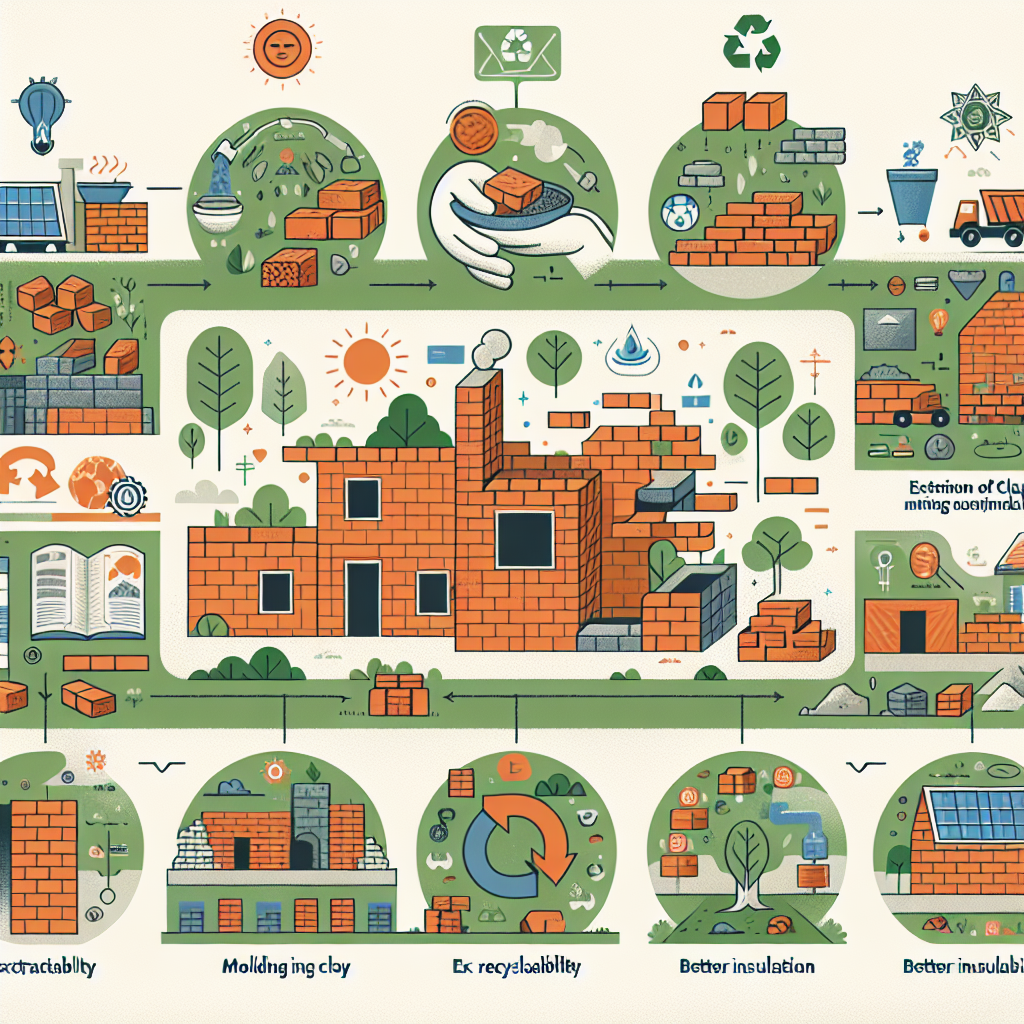In the realm of sustainable construction, clay bricks stand as a testament to durability and environmental friendliness. These natural building materials, with their impressive thermal properties, contribute significantly to a structure's energy efficiency.
The advent of technology, such as the clay brick moulding machine, has further enhanced the production process. This has made it more efficient, less labor-intensive, and more environmentally friendly.
In this article, we delve into the sustainable benefits of using clay bricks, exploring their timeless appeal, versatility, and the role they play in promoting a circular economy.
The Timeless Durability of Clay Bricks
Clay bricks, one of the oldest construction materials, are renowned for their exceptional durability. Their long lifecycle reduces the need for frequent renovations or rebuilds, contributing to sustainable construction practices.
Moreover, clay bricks are resistant to fire, pests, and mold. This inherent resilience further enhances their sustainability, making them a preferred choice for builders and architects seeking eco-friendly building materials.
Energy Efficiency and Thermal Insulation
Clay bricks contribute significantly to a building's energy efficiency. Their high thermal mass helps moderate indoor temperatures, reducing the need for artificial heating and cooling. This thermal property can lead to substantial energy savings over the life of a building.
In addition to thermal insulation, clay bricks also offer superior sound insulation. This quality enhances the comfort and privacy of indoor spaces, making clay bricks an ideal choice for residential and commercial buildings alike.
Furthermore, the natural insulation properties of clay bricks make them suitable for passive solar building designs. This compatibility with sustainable architecture further underscores their environmental benefits.
Technological Advancements: The Clay Brick Moulding Machine
The advent of the clay brick moulding machine has revolutionized the production of clay bricks. This technology has made the manufacturing process more efficient and less labor-intensive, enhancing the sustainability of clay brick production.
Moreover, these machines allow for the production of bricks in a variety of shapes and sizes. This versatility enhances the design possibilities and construction quality of clay brick structures.
Environmental Impact and Sustainable Production
The production of clay bricks can be energy-intensive. However, modern techniques and technologies have significantly reduced the carbon footprint of this process. Innovations such as the use of renewable energy and water recycling in production lines are making clay brick manufacturing more sustainable.
Clay bricks are made from natural materials, free from pollutants and allergens. This contributes to a healthier indoor environment in buildings constructed with clay bricks.
Moreover, the sourcing of clay often involves land restoration efforts post-extraction. This practice supports sustainable land use and reduces the environmental impact of clay brick production.
The Aesthetic and Functional Versatility of Clay Bricks
Clay bricks offer a timeless aesthetic appeal that can enhance the design of any building. Their natural color and texture require no additional finishes, reducing the need for potentially harmful chemicals.
Moreover, advancements like the clay brick moulding machine have enabled the production of bricks in a variety of shapes and sizes. This versatility allows clay bricks to be used in various architectural styles and construction methods.
Recycling and the Circular Economy of Clay Bricks
Clay bricks contribute to a circular economy due to their recyclability. At the end of their life, they can be crushed and reused in new construction projects. This reduces construction waste and supports sustainable building practices.
Moreover, the adaptability of clay bricks allows for their creative reuse in other projects. This further enhances their sustainability and reduces the need for new materials.
In essence, the use of clay bricks in construction supports sustainable land use and waste management.










.jpg)





0 Comments